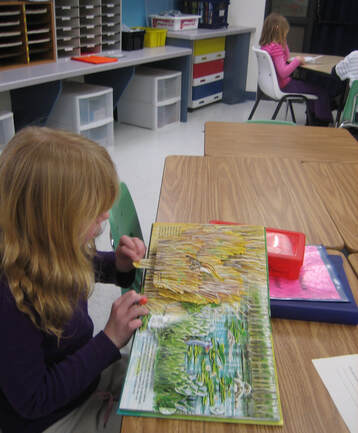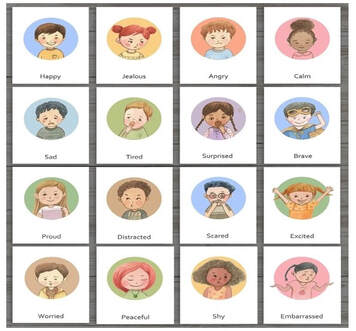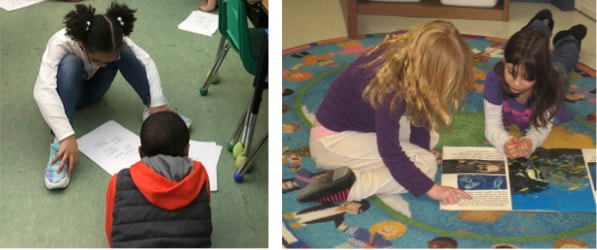|
Effortless reading is essential to comprehension: when students read fluently – with high degree of accuracy, at a good rate, and with a large dollop of expression – their cognitive efforts go into gaining meaning from words, rather than simply recognizing them. In the previous blog, I described Jay Samuel’s Repeated Reading routine – a formal procedure that builds text fluency and includes a prescribed process for picking goals, correcting errors, and reflecting on reading behaviors and strategies. But in this blog, I will look at a less formal routine, namely I Read, We Read, You Read, as well as informal re-reading activities done by students during independent reading time. First up, I Read, We Read, You Read. I Read, We Read, You Read is a Type of Guided Repeated Reading As a bit of review, guided repeated reading differs from independent repeated reading in that it gives readers support via guidance from either a teacher or peer. In the case of the I Read, We Read, You Read routine, the guidance comes from the teacher. During any small group reading time, a teacher might devote some time to the teaching of a a comprehension or decoding strategy. Then, as students read, the teacher might coach the readers in the use of that strategy. Afterwards, the group might discuss the reading, ask and answer questions, summarize, and/or review how the strategy played out during the reading. Another follow-up activity might be “I Read, We Read, You Read.” I Read, We Read, You Read doesn’t need to take much time. Five to seven minutes should be more than enough. Before the activity, though, take note of any sentences or paragraphs students had difficulty decoding. These will then be the focus of repeated reading. During the “I Read” phase, tell the students you are going to read a paragraph with “expression, very few mistakes, and at a speed that sounds like talking.” Ask your students to follow along (perhaps using fingers to track or a cover sheet) as you read the target paragraph. Then read it, with a lot of expression, a high degree of accuracy, and at a rate that is not to slow or fast. Next comes, “We Read.” This is the choral reading part. Tell your students to read the paragraph out loud with you. As you read, see that they track the words carefully and match your expression and speed. If you notice mistakes from one or more students, repeat “We Read” one more time. Finally, it is their turn to read. The command “You Read” is the echo reading part. As before, tell your students to read the paragraph one final time. Remind them to track the words carefully as they read and to stay together, matching each other’s phrasing, expression, and speed. All of this can take place with the whole group or in a small group. The picture below shows an independent reader re-reading a book while children in the background do choral and echo reading with their teacher. Engaging Independent Activities for Re-Reading Text If you offer engaging re-read activities, students may enjoy reading the small group text one more time. Or perhaps they will want to read a paragraph of their own choosing multiple times. In Paintbrush Reading, students pull a small paintbrush from a box or can of brushes and then pull the paintbrush under the sentences they are reading. They re-read the sentences multiple times, pulling the brush under the words each time, until they able to read the sentences smoothly, in phrases, at a good pace, and with expression. To see someone model this type of reading, click on this Paintbrush Reading link. Another option is to put a number of social and emotional learning cards, like these, in a pile or box in the independent reading center. During independent reading time, students can pull a card and then practice reading their text in an emotional way, as dictated by a card. For example, they might pull the sad card or the angry card or the joyful card. I suggest you take out the distracted and tired cards! Also, Chris Biffle, creator of Whole Brain Teaching, has a re-reading activity he calls the Crazy Professor Game. Click on this LINK to see the “game” in action – you’ll want to skip ahead to the time mark of 1:42. One final easy and engaging independent reading activities is Read to the Wall, whereby children get out of their seats and take their book or poem to a spot along a classroom wall. While facing the wall, they read and read again a passage from their book. This activity gives children a chance to stand and stretch, as well as do something different. Facing the wall accomplishes two things: 1) students reading quietly can still easily hear their voices because the sound waves are instantly reflected back from the wall to their ears, and 2) facing a wall promotes concentration and focus. In conclusion Repeatedly reading a page or paragraph can improve a student’s ability to read automatically. From a teacher using echo and choral re-reading to a student re-reading independently to the wall or with a paintbrush, there are many ways to do this beneficial practice. One point of instruction to stress is to “read with accuracy and expression (reading quality)” rather than focusing students strictly on words per minute (speed). A certain amount of rate is helpful, for sure, but reading words accurately will help comprehension even more. And reading with inflection and phrasing also is a hallmark of reading that involves deeper comprehension. As teachers, we are thrilled to hear students reading with flow and expression. While the sound of fluent reading is beautiful in and of itself, we also know that effortless reading is beautiful because it is essential to comprehension. When students read fluently – with high degree of accuracy, at a good rate, and with lots of expression – their cognitive efforts go into gaining meaning from text, rather than recognizing words. Fluency instruction can take many forms, but it typically involves having students read orally. This allows teachers to hear how the text is being processed. In some cases, students read the same page or paragraph multiple times, which may improve a student’s ability to read automatically. But repeated reading is not the only game in town. In other cases, students read new text in a non-repetitive manner. When done with specific supports, this type of reading also builds fluency. Over the next few blogs, we will look at instruction that builds a student’s fluency. The general categories of instruction are 1) repetitive or repeated reading and 2) supported non-repetitive reading. Up first, Jay Samuel’s Repeated Reading, a specific form of guided repeated reading. Guided Repeated Reading
Guided repeated reading differs from independent repeated reading in that it gives readers support via guidance from either a teacher or peer. There are a variety of guided repeated reading routines and they exist on a continuum of highly formal to informal. Let’s first discuss a formal one pioneered by Dr. Jay Samuels and aptly titled Repeated Reading. Across many decades, Repeated Reading has shown strong evidence for improving the oral reading fluency of students, from elementary to secondary, from typical learners to students with learning disabilities. Typically, during Repeated Reading, students orally read a single passage multiple times to reach a certain percentage of accuracy rate, or to complete a prescribed number of readings. For example, students might be instructed to repeatedly read a passage until reaching 130 words correct per minute (WCPM). But because rate can be overrated and helps comprehension only up to a point, other goals should be considered. More on this in a minute. Key components of Repeated Reading Researchers have identified several key components of Repeated Reading instruction.
As mentioned earlier, goal setting can involve a student picking numerical goal, such as “I will read 120 WCPM on my third reading of the passage.” But studies shows that during guided repeated reading with student coaches, some peers consistently recorded inaccurate reading rates. In addition, goals that stress the number of words read correctly per minute may communicate that speed is more important than quality! So, some researchers recommend that students be taught to focus on other quantifiable reading behaviors, as well as reading strategies. Examples of these behaviors and strategies include:
Repeated Reading Lesson A typical session of Repeated Reading involves the following:
For more details on all of this, from a teacher’s introductory lesson and a peer’s coaching to the science behind the procedure, check out the full Iowa Center for Reading Research article at iowareadingresearch.org/blog/repeated-reading-fluency. And remember these two important ideas as you think about how to build fluency: 1) Fluency is built through the rehearsal and refinement of word recognition, and 2) a what is most important is a focus on reading quality rather than reading speed. Sources |
Mark WeaklandI am a teacher, literacy consultant, author, musician, nature lover, and life long learner.
|



 RSS Feed
RSS Feed